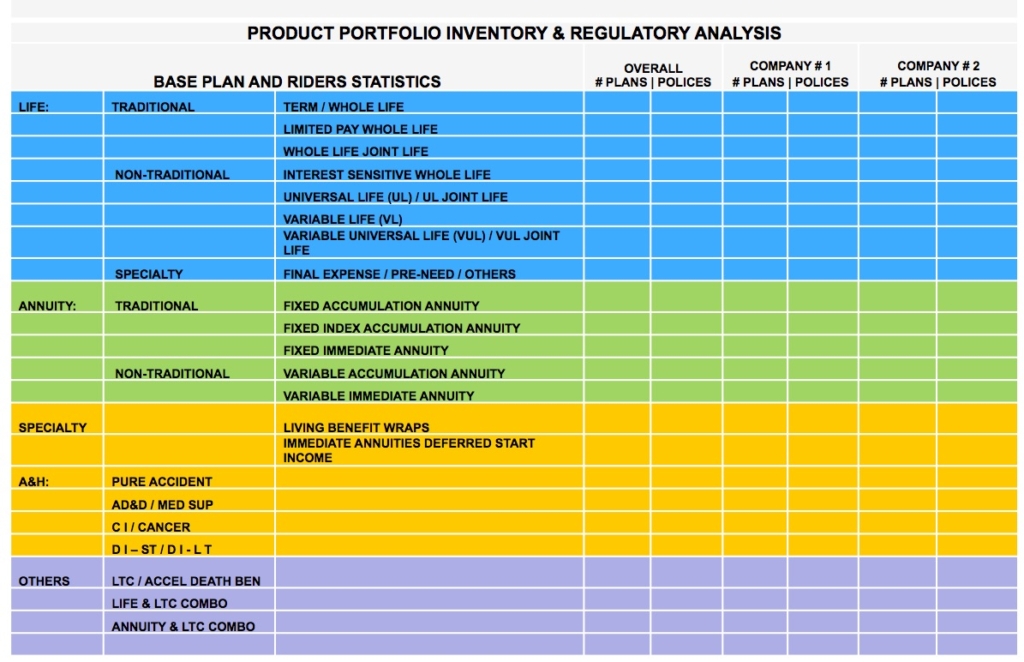 Build A Matrix – The product and policy analysis step involves creating a matrix to identify all products that need support. Products usually fall into three different categories: brand new products – which will most always be the first ones that a new PAS system will support, – then a list of all active products, then the inactive products. This inventory should include a count of existing policies by product, and identify distribution channels used. It is important to do this, up front, so the information is available prior to seeing any vendors. If you have multiple PAS systems, you should create a matrix for each system. This enables you to see what the systems have in common, as far as product support needs.
Build A Matrix – The product and policy analysis step involves creating a matrix to identify all products that need support. Products usually fall into three different categories: brand new products – which will most always be the first ones that a new PAS system will support, – then a list of all active products, then the inactive products. This inventory should include a count of existing policies by product, and identify distribution channels used. It is important to do this, up front, so the information is available prior to seeing any vendors. If you have multiple PAS systems, you should create a matrix for each system. This enables you to see what the systems have in common, as far as product support needs.
To Focus Attention – When carriers begin looking at vendor’s solutions, they tend to pick a vendor who can support their newest product and execute a proof of concept. They generally are successful. And so they’ve achieved their first goal, but then the remaining goals of addressing the currently active and legacy products are not achieved. Building the initial product matrix, prior to vendor review, helps resolve this problem. It provides a ready reference of all product support requirements and helps keep your team’s focus on the broader picture.
And Ensure the Best Solution – When you do vendor walk-throughs later, using the matrix, you can rank vendors by line of business or by products. You’ll know which vendors are going to be high in one category or lower in another. It’s another layer of information available for when you get to a decision point on a solution.

